This month (May 2022) I stumbled upon an interesting piece of news about tourism in France. The article is entitled “What are the 10 most searched villages in France on Google? My curiosity led me to click on the link to read the article. And what I read awakened some beautiful memories. At the end of the article, I will reveal the name of the French village that has been seen the most on the French Moments blog!
A simple Google search analysis!
How did the list of the 10 most searched villages in France on Google come about?
The idea is quite simple (but it should have been thought of!) An online holiday rental comparator analysed the number of Google searches made by tourists, associated with the queries “what to do”, “what to see” and “what to visit” in over 30,000 French villages.
But beware of intruders! In France, a village is defined as a commune with less than 2000 inhabitants. This principle has been respected by the site to draw up the ranking.
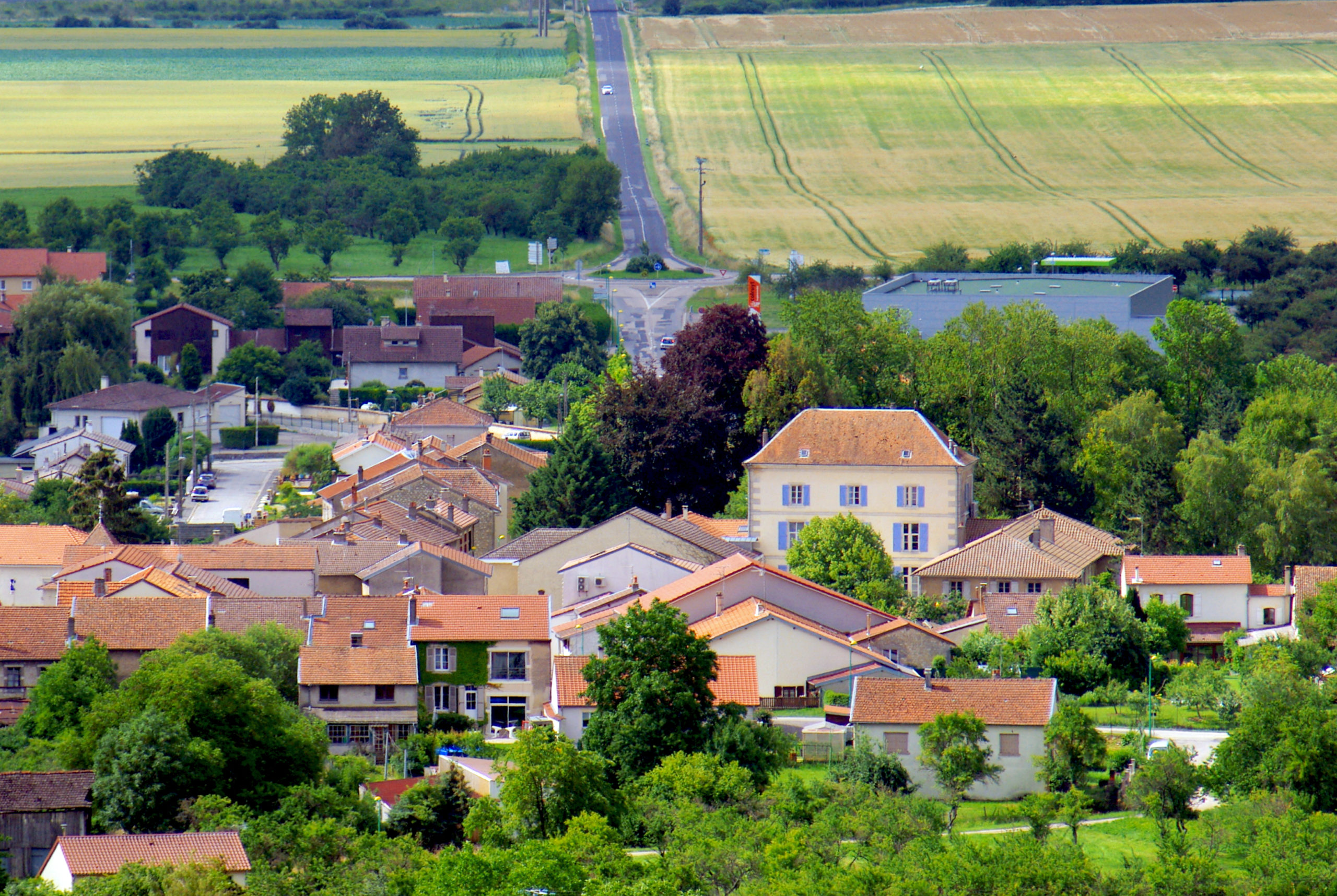
My observation about the French villages listed
- The statistics used to draw up the list are relatively reliable. Moreover, in 2020 and 2021, under the effect of the pandemic crisis, the French have massively stayed in France. Our country is large and diverse enough to satisfy everyone’s desires (beach, mountain, countryside or city). Moreover, Google searches are not limited to those carried out by the French. For example, it’s a safe bet that Giverny’s superb score is due to English-speaking tourists.
- I have seen how popular France is with the French on my French blog “Mon Grand-Est“. Since last year, its traffic has increased significantly (it has actually doubled!), as French and European visitors from the eastern part of the country want to discover the region around them.
- Some of these villages are part of the association “Les plus beaux villages de France” (The most beautiful villages of France): Conques, Gordes, Les Baux-de-Provence, Riquewihr, Saint-Jean-Pied-de-Port and Yvoire.
- Seven villages out of ten are located south of a line from Nantes to Mulhouse.
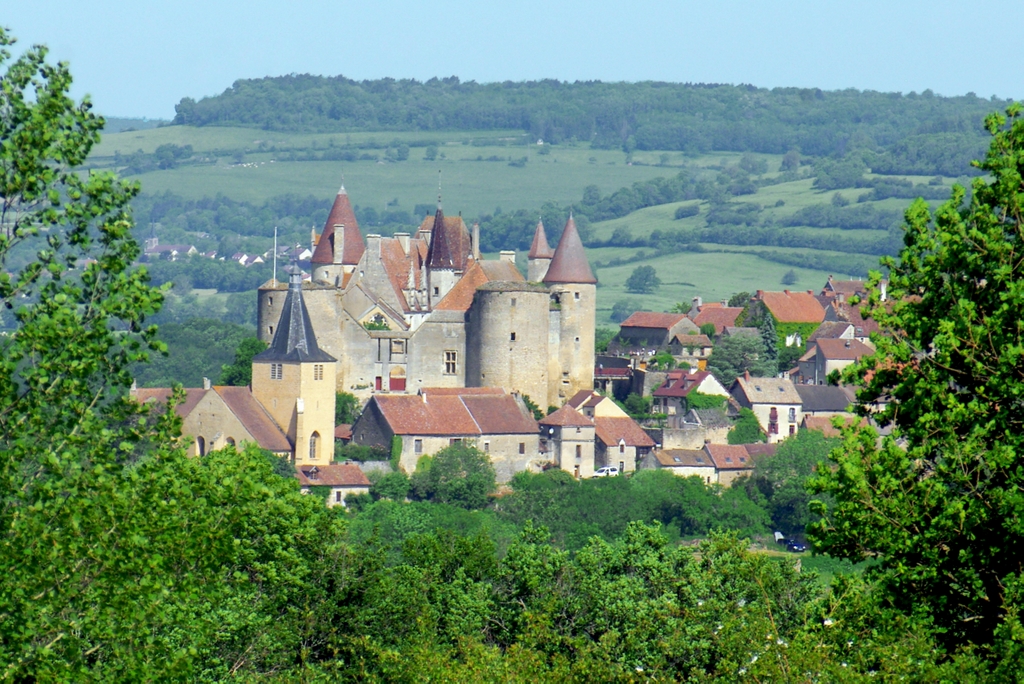
The 10 most searched villages in France on Google
Here is the list of the 10 most searched villages in France on Google:
- Rocamadour
- Giverny
- Les Baux-de-Provence
- Gordes
- Saint-Jean-Pied-de-Port
- Yvoire
- Sancerre
- Saint-Florent
- Conques
- Riquewihr
This map allows you to easily locate the villages in focus:
Rocamadour
- Situation: département of Lot, region of Occitania
- Find out more on the blog!
- Book your accommodation in Rocamadour
When coming from Cahors by road, Rocamadour suddenly appears clinging precariously against the cliff above the Alzou canyon. The stunning medieval village seemingly defies the laws of gravity. It is no surprise why the village is at the top of the list.
The vertiginous Citadel of Faith is best summed up by an old local saying: “houses on the river, churches on the houses, rocks on the churches, castle on the rock”.
In 1998 UNESCO listed the shrine of Rocamadour as a World Heritage Site by UNESCO as part of the St. James’ Way pilgrimage to Santiago de Compostela.
We visited Rocamadour on a sunny day in September and here is an account of our visit!
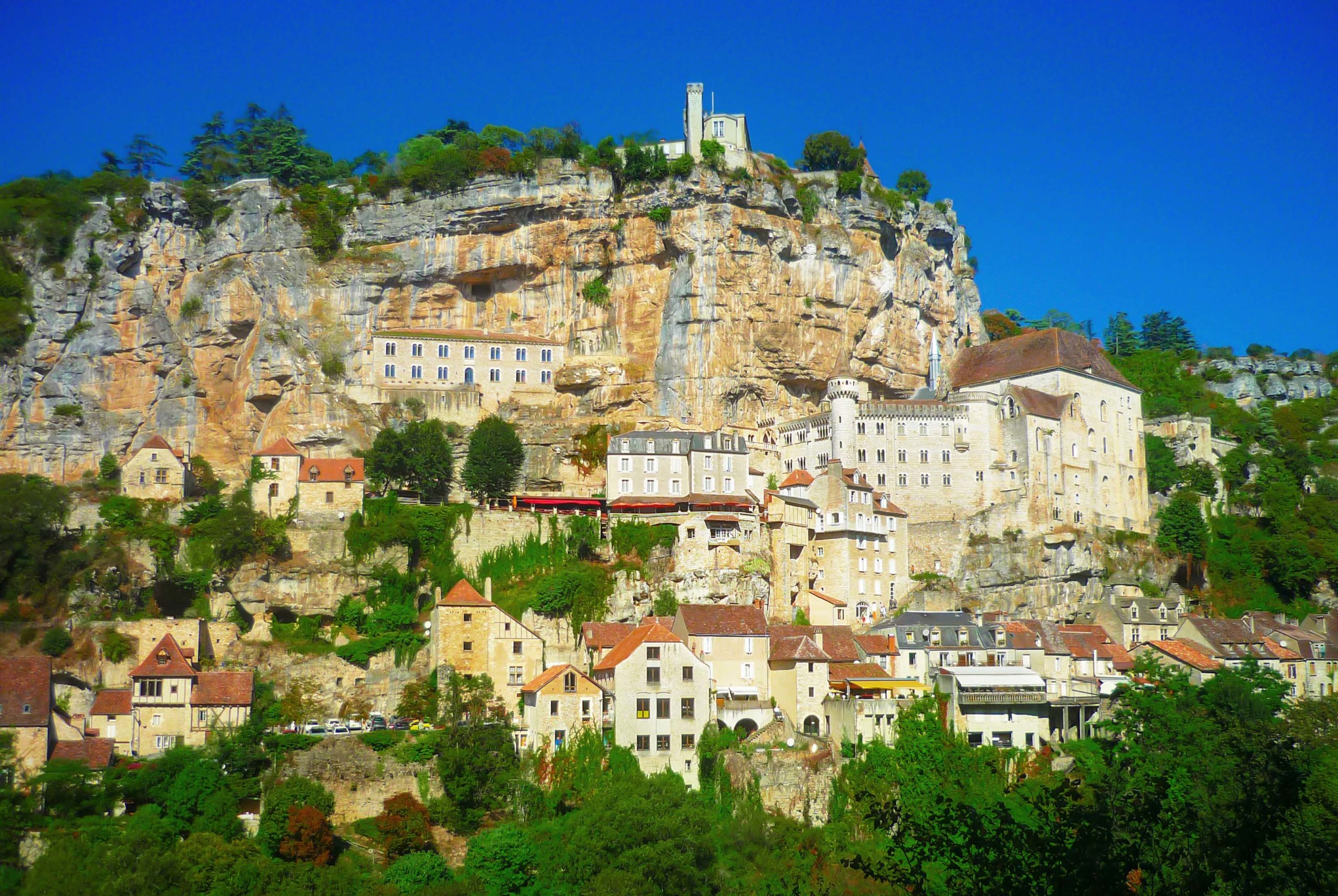


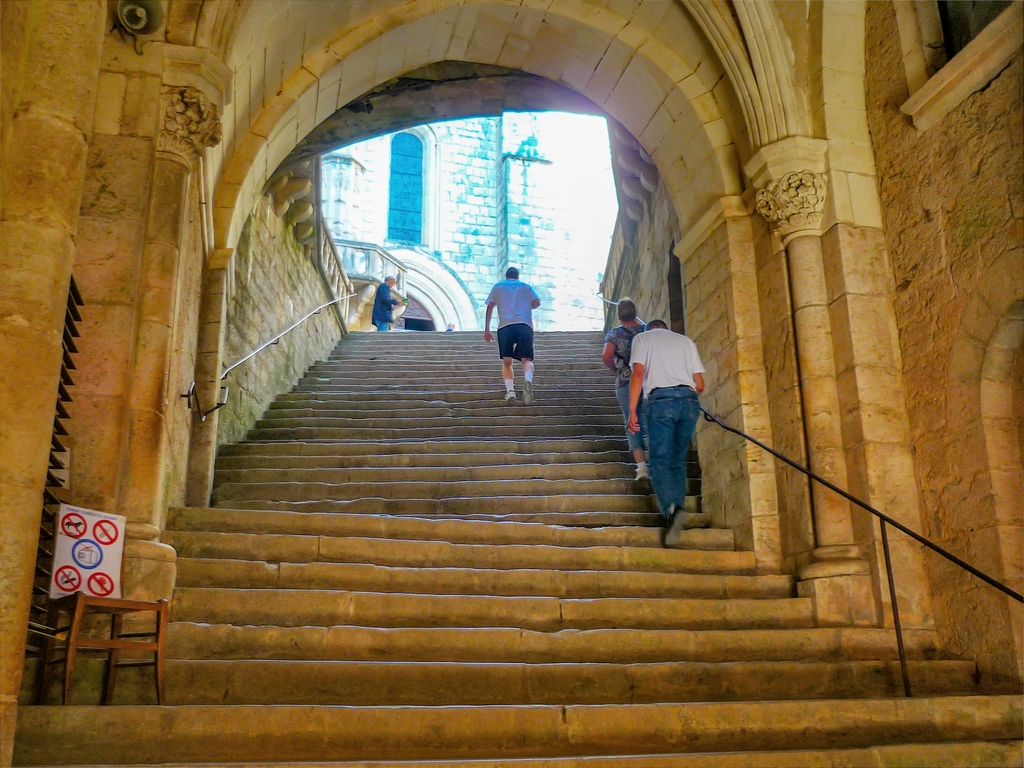
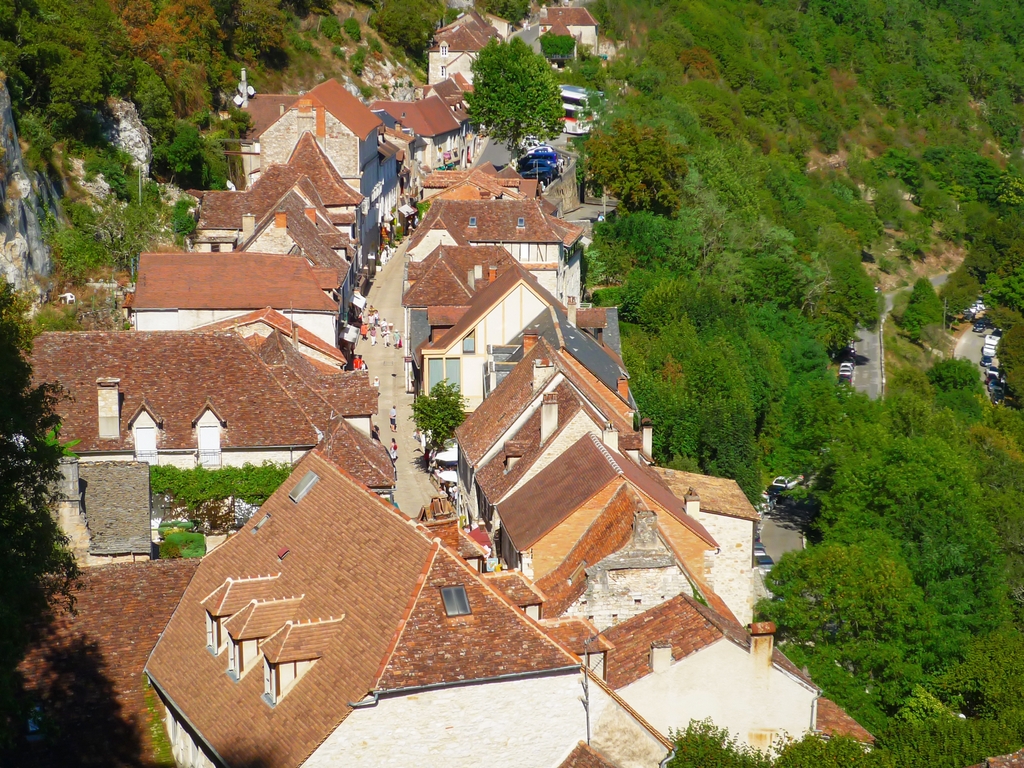
Giverny
- Situation: département of Eure, region of Normandy
- Find out more on the blog!
- Book your accommodation in Giverny
When impressionist painter Claude Monet fell in love at the site of the village of Giverny with its low slate roof houses covered with wisteria and creepers, he decided to move there with his family.
At his death, his son Michel inherited the estate. However, he had not much interest in the gardens and left them to the care of Blanche Monet-Hoschedé.
Then, after a period of abandonment, the Fondation Claude Monet restored the gardens in 1980. Listed as a “Jardin Remarquable” for its outstanding beauty, Monet’s Gardens in Giverny have become a major tourist attraction, the second in Normandy after Mont-Saint-Michel. The site welcomes over 530,000 visitors each year.
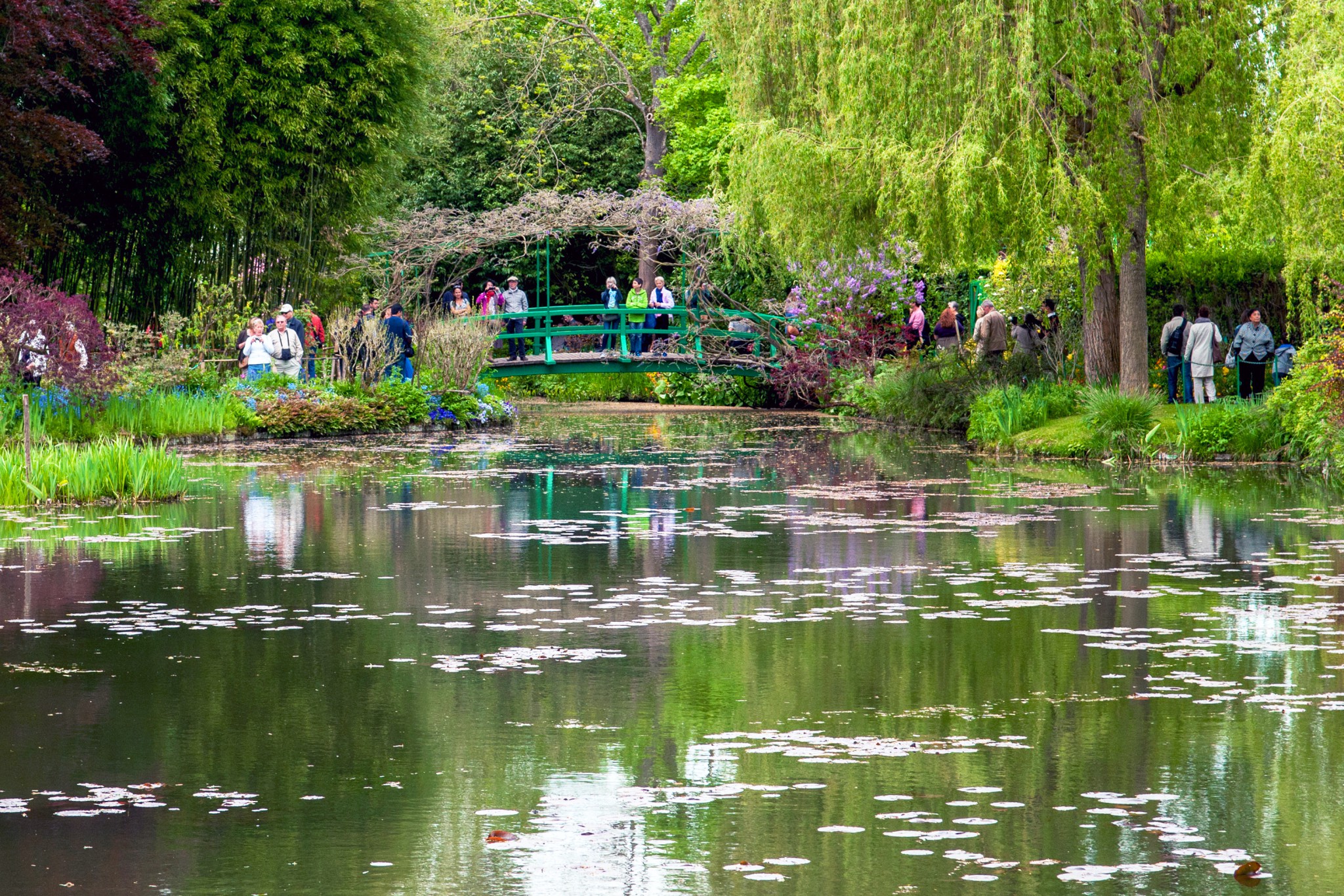
![The Claude Monet House in Giverny © Michal Osmenda - licence [CC BY 2.0] from Wikimedia Commons](https://frenchmoments.eu/wp-content/uploads/2022/05/Giverny-Claude-Monet-house-and-garden-©-Michal-Osmenda-licence-CC-BY-2.0-from-Wikimedia-Commons-scaled.jpg)
![Giverny © Michal Osmenda - licence [CC BY 2.0] from Wikimedia Commons](https://frenchmoments.eu/wp-content/uploads/2022/05/Giverny-Claude-Monet-garden-©-Michal-Osmenda-licence-CC-BY-2.0-from-Wikimedia-Commons-scaled.jpg)
![Villages in France - Giverny © randreu - licence [CC BY 3.0] from Wikimedia Commons](https://frenchmoments.eu/wp-content/uploads/2022/05/Giverny-©-randreu-licence-CC-BY-3.0-from-Wikimedia-Commons-scaled.jpg)
![Villages in France - Giverny © Jmpn photographie - licence [CC BY-SA 4.0] from Wikimedia Commons](https://frenchmoments.eu/wp-content/uploads/2022/05/Giverny-©-Jmpn-photographie-licence-CC-BY-SA-4.0-from-Wikimedia-Commons.jpg)
Les Baux-de-Provence
- Situation: département of Bouches-du-Rhône, region of Provence-Alpes-Côte-d’Azur
- Find out more on the blog!
- Book your accommodation in Les Baux-de-Provence
The site of Les Baux-de-Provence is 15 km from Arles and 25 km from Avignon. The small village and its medieval castle are the stars of the Alpilles. Set atop a rocky spur, it offers panoramic views over the Crau plain, the Camargue and the city of Arles.
A member of the Plus Beaux Villages de France association, Les Baux-de-Provence attracts 1.5 million tourists a year, while it has a permanent population of only 400!
Many of the houses still make for fascinating ruins which evoke the conditions of medieval times when the village’s population was as many as 4,000.


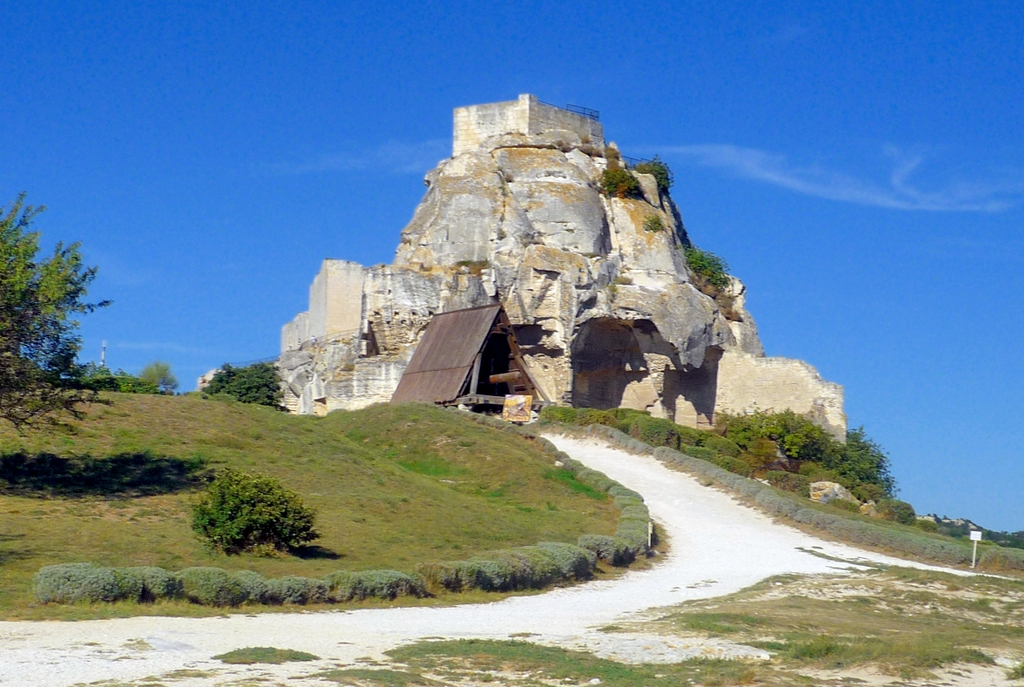


Gordes
- Situation: département of Vaucluse, region of Provence-Alpes-Côte-d’Azur
- Find out more on the blog!
- Book your accommodation in Gordes
The village of Gordes occupies a rocky hill at 635 metres high, on the south flank of the Vaucluse plateau. The Provençal village dominates the plain of the Calavon River. It is the most visited locality in the Luberon region and enjoys 300 days of sunshine a year.
What to see in Gordes? Its two abbeys (Saint Chaffret and Sénanque), the Saint Firmin palace, ancient paved streets, mills, chapels and washhouses.

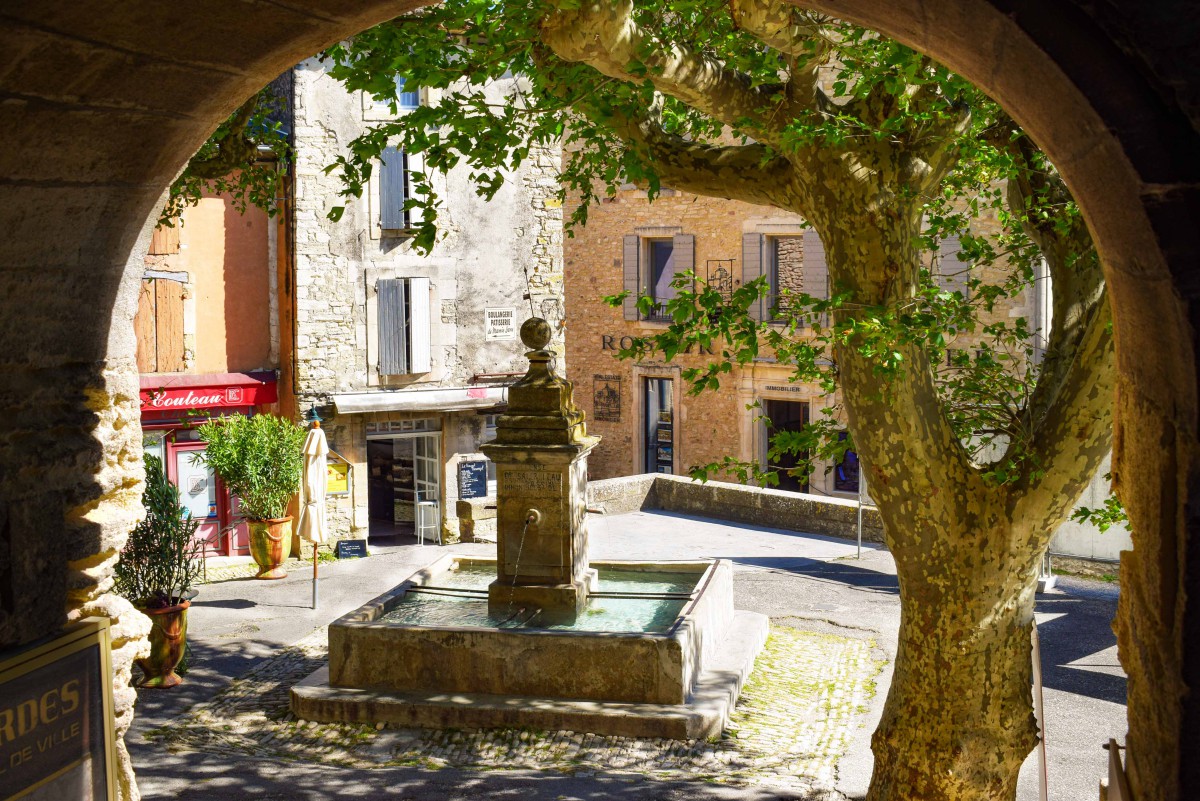

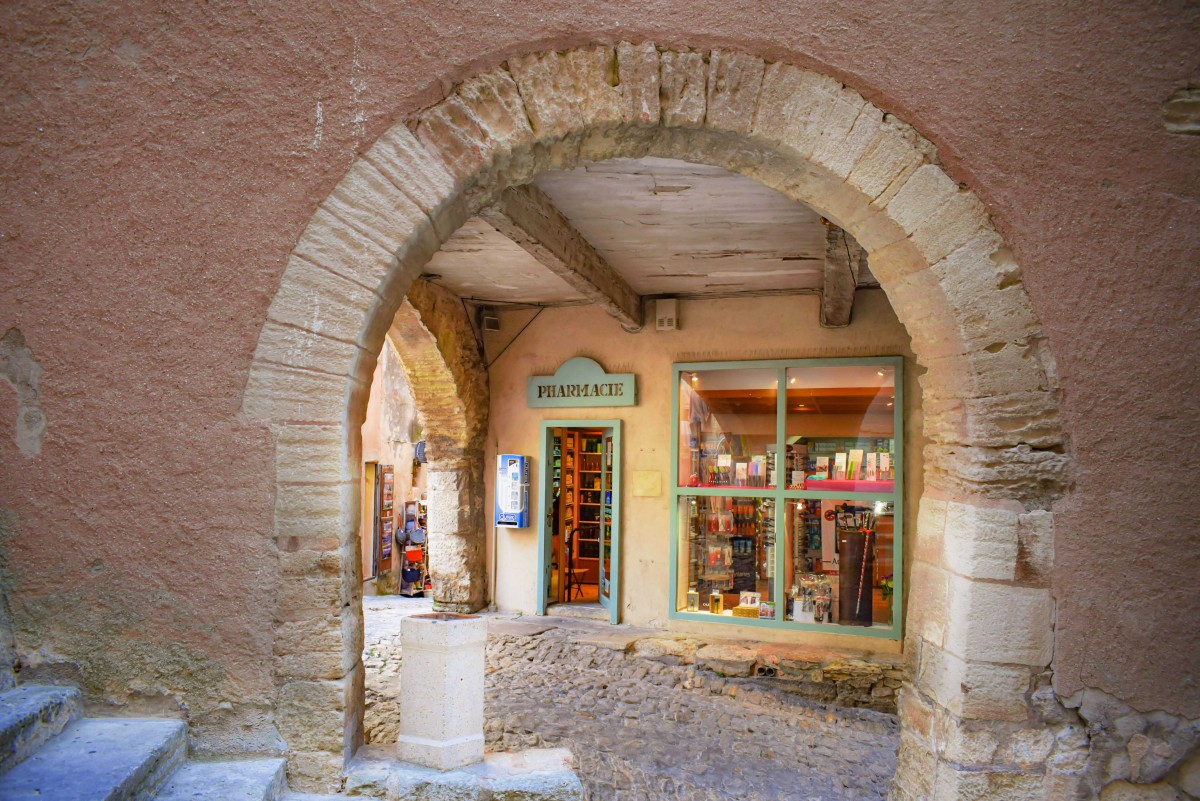
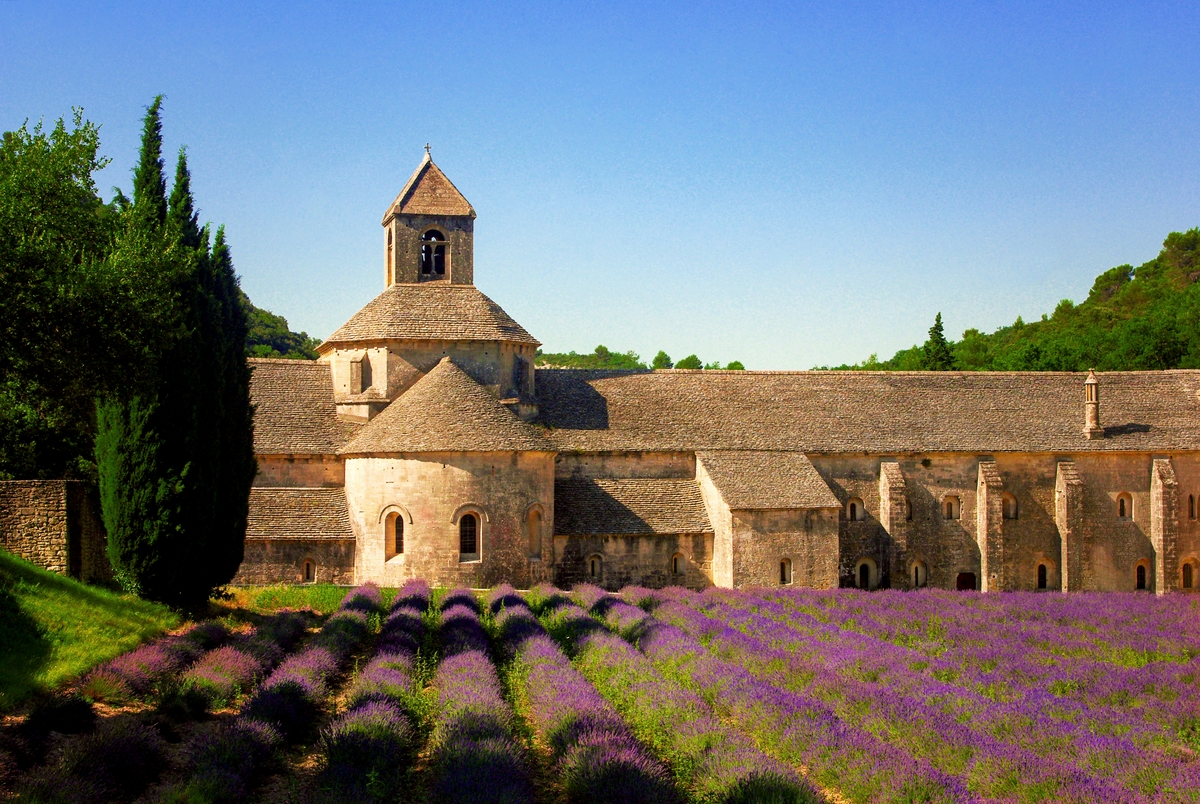
Saint-Jean-Pied-de-Port
- Situation: département of Pyrénées Atlantiques, region of Nouvelle Aquitaine
- Book your accommodation in Saint-Jean-Pied-de-Port
Saint-Jean-Pied-de-Port is a Basque village located at the confluence of the Nive and Laurhibar rivers.
Its name (literally Saint-John at the foot of the mountain pass) comes from its location at the foot of the Roncesvalles pass (alt. 1,057 m), which allows it to pass south of the Pyrenees.
This former political and administrative capital of Lower Navarre is now an economic, cultural and sporting centre for the Basque Country. The village is also a tourist centre, receiving around 55,000 visitors each year. Many of them are also pilgrims on the Way of Saint James, of which the town is an important stopover.
![Villages in France - Saint-Jean-Pied-de-Port © W. Bulach - licence [CC BY-SA 4.0] from Wikimedia Commons](https://frenchmoments.eu/wp-content/uploads/2022/05/Saint-Jean-Pied-de-Port-©-W.-Bulach-licence-CC-BY-SA-4.0-from-Wikimedia-Commons-scaled.jpg)
![Villages in France - Saint-Jean-Pied-de-Port 01 © René Hourdry - licence [CC BY-SA 4.0] from Wikimedia Commons](https://frenchmoments.eu/wp-content/uploads/2022/05/Saint-Jean-Pied-de-Port-01-©-René-Hourdry-licence-CC-BY-SA-4.0-from-Wikimedia-Commons-scaled.jpg)
![Villages in France - Saint-Jean-Pied-de-Port 02 © René Hourdry - licence [CC BY-SA 4.0] from Wikimedia Commons.jpg](https://frenchmoments.eu/wp-content/uploads/2022/05/Saint-Jean-Pied-de-Port-02-©-René-Hourdry-licence-CC-BY-SA-4.0-from-Wikimedia-Commons.jpg-scaled.jpg)
![Villages in France - Saint-Jean-Pied-de-Port Goizeko Izarra © A1AA1A - licence [CC BY-SA 4.0] from Wikimedia Commons](https://frenchmoments.eu/wp-content/uploads/2022/05/Saint-Jean-Pied-de-Port-Goizeko-Izarra-©-A1AA1A-licence-CC-BY-SA-4.0-from-Wikimedia-Commons-scaled.jpg)
![Saint-Jean-Pied-de-Port Landscape © Szeder László - licence [CC BY-SA 4.0] from Wikimedia Commons](https://frenchmoments.eu/wp-content/uploads/2022/05/Saint-Jean-Pied-de-Port-Landscape-©-Szeder-László-licence-CC-BY-SA-4.0-from-Wikimedia-Commons.jpg)
Yvoire
- Situation: département of Haute-Savoie, region of Auvergne-Rhône-Alpes
- Find out more on the blog!
- Book your accommodation in Yvoire
On the French shores of Lake Geneva, Yvoire is one of France’s most beautiful villages, locally nicknamed the “Pearl of Lake Geneva” (la Perle du Léman).
The fortified village is famous for its floral display and has been awarded the International Trophy for Landscape and Horticulture.
Its pedestrianised narrow streets are an invitation for a historic stroll, leading to the calm and tranquil waterfront with splendid views of Lake Geneva, the Alps of Chablais and the Jura Mountains.
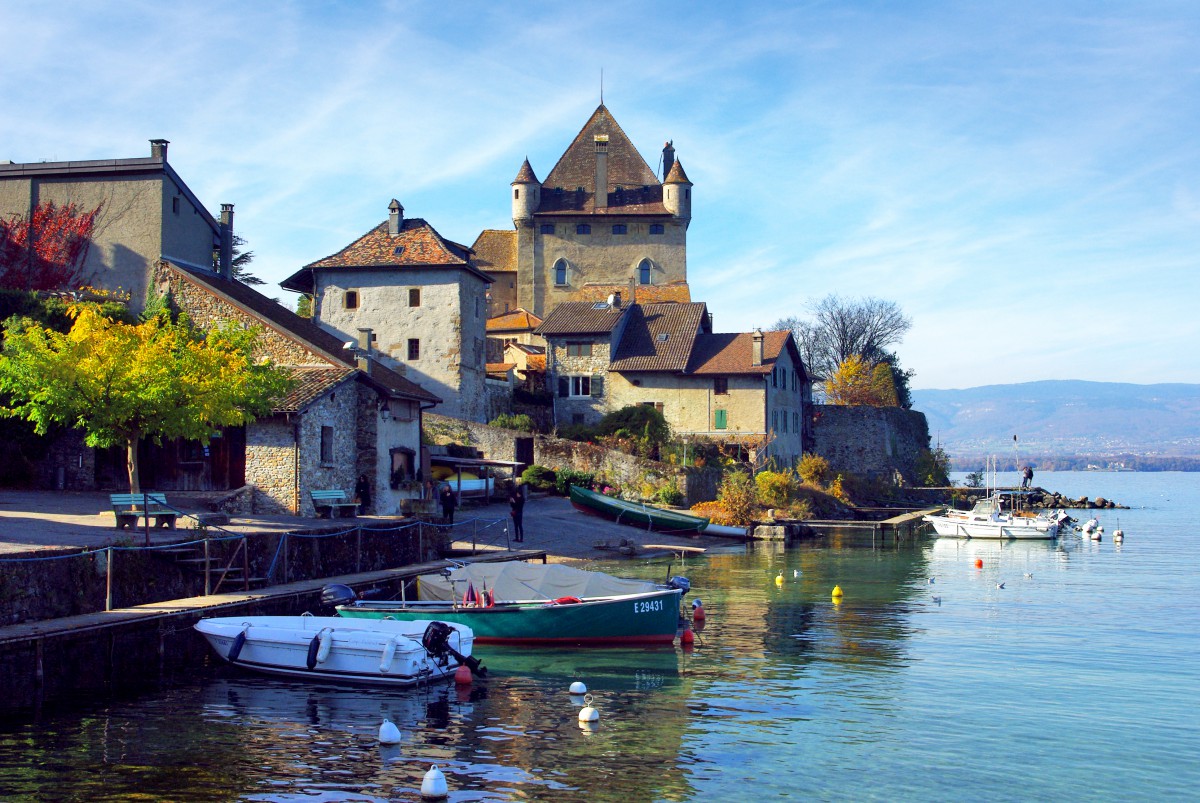

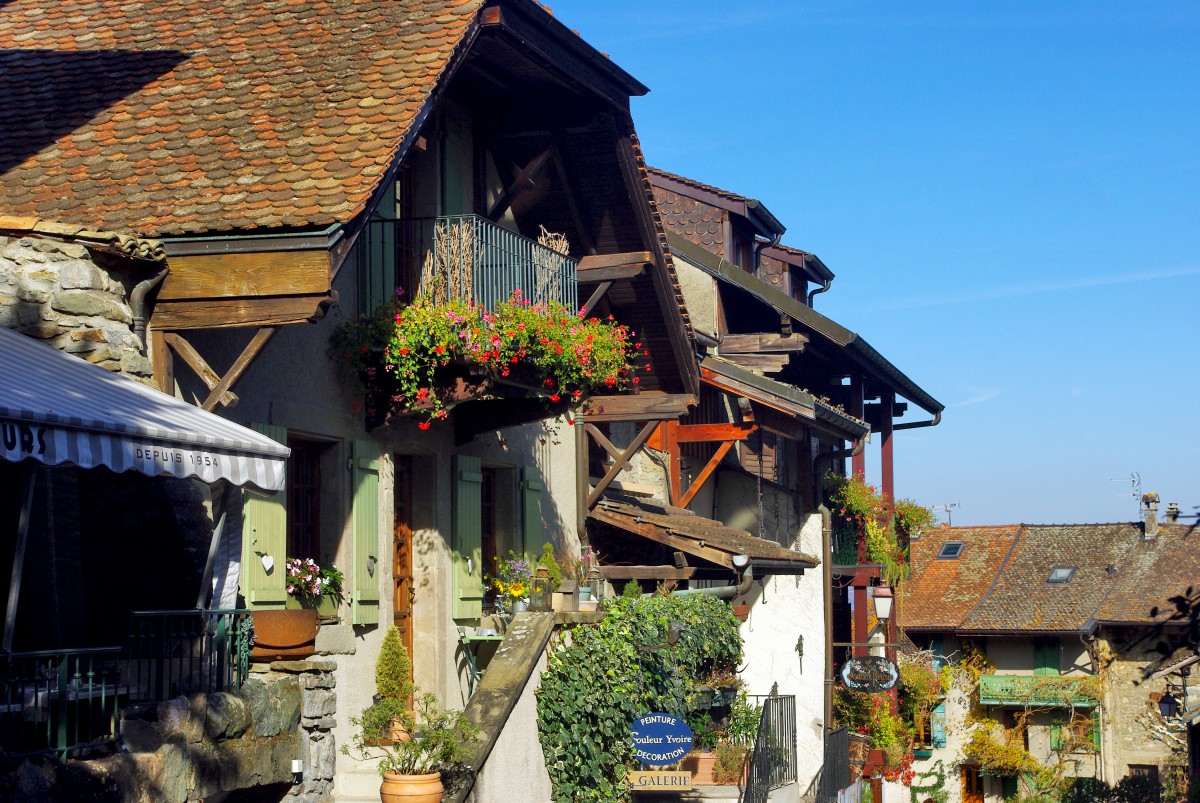
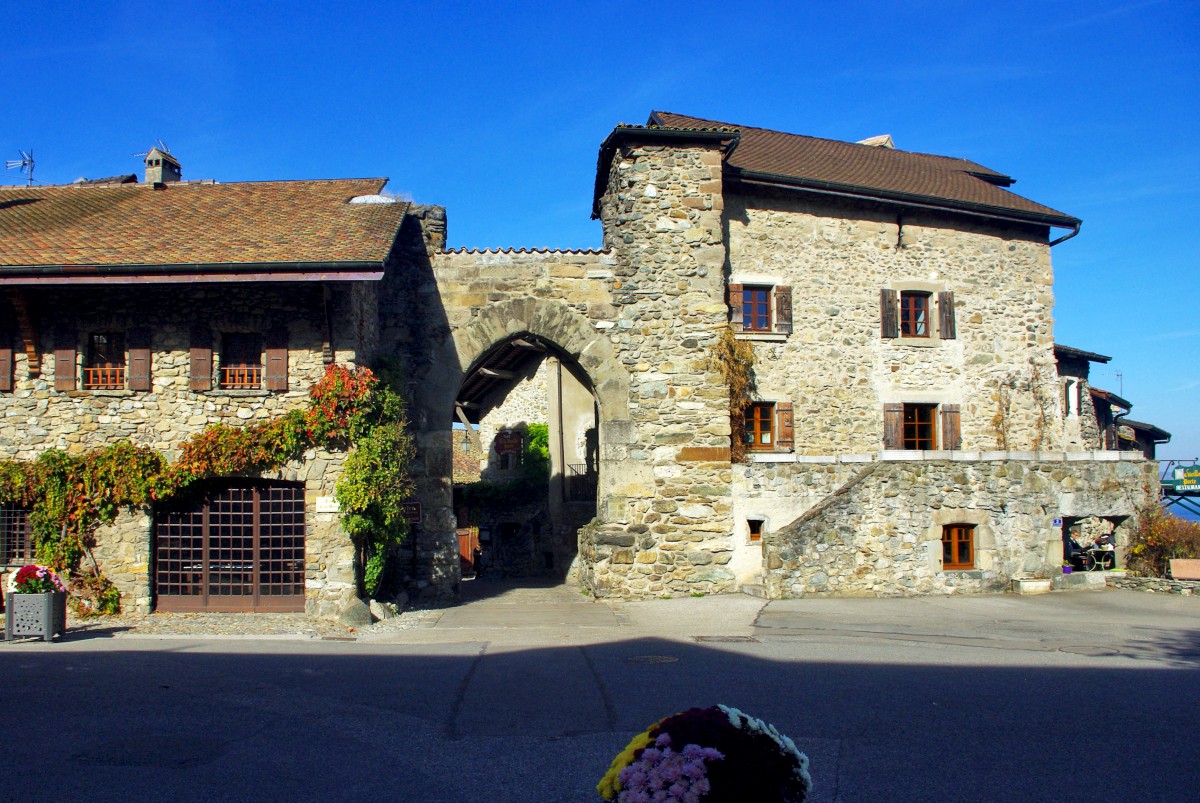
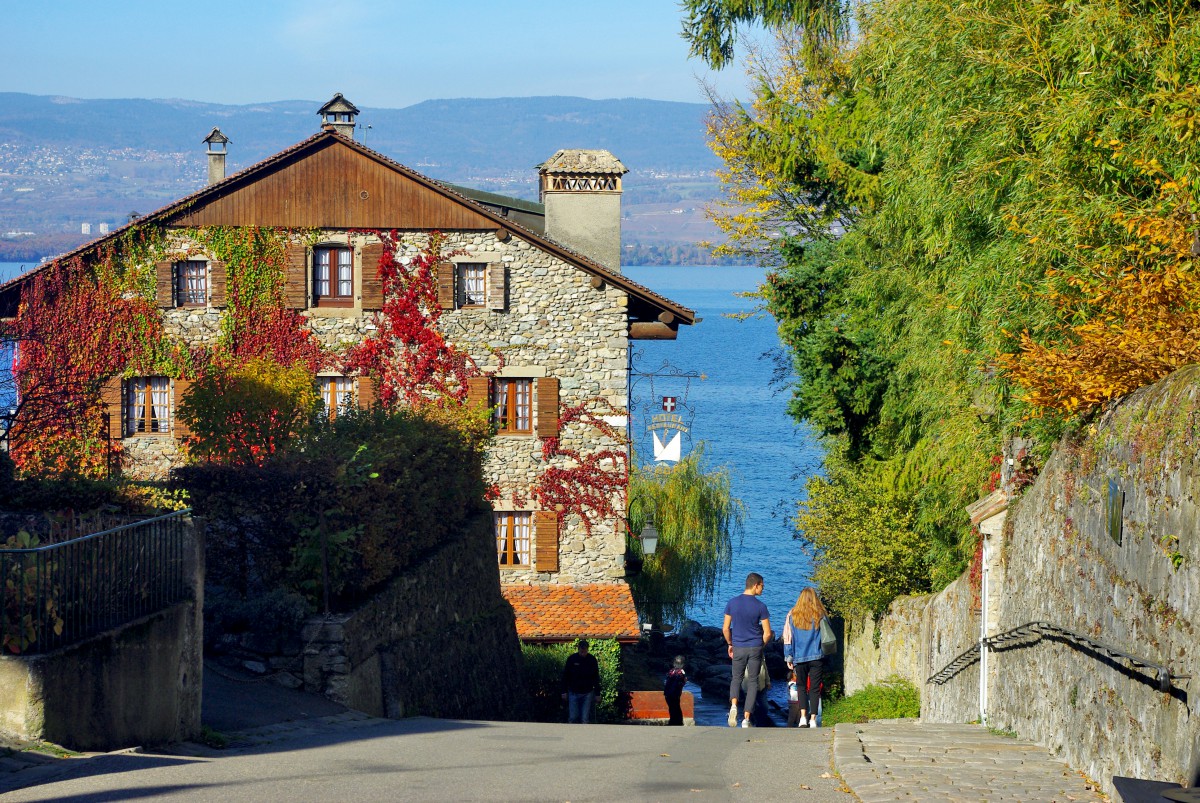
Sancerre
- Situation: département of Cher, region of Centre-Val-de-Loire
- Book your accommodation in Sancerre
Sancerre occupies the summit of an isolated hill at an altitude of 310 metres and dominates the level of the Loire. Furthermore, Sancerre is found on the eastern edge of the Centre-Val de Loire region and the Loire River separates it from Burgundy.
The village offers a panoramic view of the famous Sancerre vineyards and the banks of the Loire. The centre of the village comprises old houses in narrow, picturesque streets, including the winegrowers’ quarter and the “rue des Juifs”.
In 2021, this commune was elected as the “Village préféré des Français” (the favourite village of the French) on the France 3 TV show.
![Sancerre © Taxiarchos228 - licence [CC BY-SA 3.0] from Wikimedia Commons](https://frenchmoments.eu/wp-content/uploads/2020/06/Sancerre-©-Taxiarchos228-licence-CC-BY-SA-3.0-from-Wikimedia-Commons-1.jpg)
![Villages in France - Sancerre © Cjp24 - licence [CC BY-SA 4.0] from Wikimedia Commons](https://frenchmoments.eu/wp-content/uploads/2022/05/Sancerre-©-Cjp24-licence-CC-BY-SA-4.0-from-Wikimedia-Commons.jpg)
![Villages in France - © Moreau.henri - licence [CC BY-SA 3.0] from Wikimedia Commons](https://frenchmoments.eu/wp-content/uploads/2022/05/Sancerre-Maison-de-Jacques-Coeur-©-Moreau.henri-licence-CC-BY-SA-3.0-from-Wikimedia-Commons-scaled.jpg)
![Villages in France - Sancerre © Rolf Kranz - licence [CC BY-SA 4.0] from Wikimedia Commons](https://frenchmoments.eu/wp-content/uploads/2022/05/Sancerre-Rue-Saint-Jean-©-Rolf-Kranz-licence-CC-BY-SA-4.0-from-Wikimedia-Commons-scaled.jpg)
![Sancerre © Pline - licence [CC BY-SA 3.0] from Wikimedia Commons](https://frenchmoments.eu/wp-content/uploads/2022/05/Sancerre-©-Pline-licence-CC-BY-SA-3.0-from-Wikimedia-Commons-scaled.jpg)
Saint-Florent
- Situation: département of Haute-Corse, region of Corsica
- Book your accommodation in Saint-Florent
Saint-Florent is located in the Nebbio, a small region south of the Cap Corse peninsula. It was the capital of the former Genoese province of Nebbio.
The region of Saint-Florent is beautiful, with its landscape of mountains flowing into the sea. The waters of the Gulf of Saint-Florent wash the coast, between the beach of Loto to the west and the mouth of the stream of La Strutta to the east.
Nestling at the bottom of its gulf, the town of Saint-Florent, with its fishing and yachting port, is at the entrance to the Agriates and the famous beach of Saleccia (Santo-Pietro-di-Tenda), as well as near the vineyards of Patrimonio. Thus, the village is a small paradise that has become one of the most popular seaside resorts in Corsica. Festivals, vineyards and remarkable beaches have even earned it the nickname “Petit Saint-Tropez”.
![Villages in France - Saint-Florent © Pierre Bona - licence [CC BY-SA 3.0] from Wikimedia Commons](https://frenchmoments.eu/wp-content/uploads/2022/05/Saint-Florent-01-©-Pierre-Bona-licence-CC-BY-SA-3.0-from-Wikimedia-Commons-scaled.jpg)
![Villages in France - Saint-Florent © Pierre Bona - licence [CC BY-SA 3.0] from Wikimedia Commons](https://frenchmoments.eu/wp-content/uploads/2022/05/Saint-Florent-04-©-Pierre-Bona-licence-CC-BY-SA-3.0-from-Wikimedia-Commons-scaled.jpg)
![Villages in France - Saint-Florent © Pierre Bona - licence [CC BY-SA 3.0] from Wikimedia Commons](https://frenchmoments.eu/wp-content/uploads/2022/05/Saint-Florent-06-©-Pierre-Bona-licence-CC-BY-SA-3.0-from-Wikimedia-Commons.jpg)
![Villages in France - Saint-Florent © Pierre Bona - licence [CC BY-SA 3.0] from Wikimedia Commons](https://frenchmoments.eu/wp-content/uploads/2022/05/Saint-Florent-Cathedrale-du-Nebbiu-©-Pierre-Bona-licence-CC-BY-SA-3.0-from-Wikimedia-Commons-scaled.jpg)
![Villages in France - Saint-Florent 03 © Pierre Bona - licence [CC BY-SA 3.0] from Wikimedia Commons](https://frenchmoments.eu/wp-content/uploads/2022/05/Saint-Florent-03-©-Pierre-Bona-licence-CC-BY-SA-3.0-from-Wikimedia-Commons.jpg)
Conques
- Situation: département of Aveyron, region of Occitania
- Book your accommodation in Conques
The village of Conques occupies the confluence of the Dourdou and the Ouche which form a sort of shell at this point (“Concha” in Latin, “Conca” in Occitan). This situation is said to have given the village its name.
Throughout the Middle Ages, Conques was an important sanctuary where the relics of the skull of Saint Foy were venerated. Conques is a “major stage” on the road to Santiago de Compostela.
Conques is a member of the association Les plus beaux villages de France. Indeed, the ancient village has preserved its authentic medieval character. Spread out on the side of the mountain, the village surrounds the abbey in a vast arc. The houses are arranged in espaliers with their main facades facing south.
Conques is famous for its abbey church of Sainte-Foy. This magnificent Romanesque building dates from the 11th and 12th centuries. However, the two front towers are a 19th-century addition. The most famous part of the building is the tympanum. The abbey church also houses a treasure trove of unique pieces of art from the Carolingian period.
Finally, at the foot of the village, the Way of Saint James crosses the Dourdou thanks to an old bridge built in 1410 (the Roman bridge).
![Villages in France - Conques © Daniel CULSAN - licence [CC BY-SA 3.0] from Wikimedia Commons](https://frenchmoments.eu/wp-content/uploads/2022/05/Conques-©-Daniel-CULSAN-licence-CC-BY-SA-3.0-from-Wikimedia-Commons-scaled.jpg)
![Villages in France - Conques © Daniel CULSAN - licence [CC BY-SA 3.0] from Wikimedia Commons](https://frenchmoments.eu/wp-content/uploads/2022/05/Conques-02-©-Daniel-CULSAN-licence-CC-BY-SA-3.0-from-Wikimedia-Commons-scaled.jpg)
![Villages in France - Conques © Daniel CULSAN - licence [CC BY-SA 3.0] from Wikimedia Commons](https://frenchmoments.eu/wp-content/uploads/2022/05/Conques-03-©-Daniel-CULSAN-licence-CC-BY-SA-3.0-from-Wikimedia-Commons-scaled.jpg)
![Villages in France - Conques © Krzysztof Golik - licence [CC BY-SA 4.0] from Wikimedia Commons](https://frenchmoments.eu/wp-content/uploads/2022/05/Conques-©-PA-licence-CC-BY-SA-4.0-from-Wikimedia-Commons-scaled.jpg)
![Villages in France - Conques © Krzysztof Golik - licence [CC BY-SA 4.0] from Wikimedia Commons](https://frenchmoments.eu/wp-content/uploads/2022/05/Conques-©-Krzysztof-Golik-licence-CC-BY-SA-4.0-from-Wikimedia-Commons-scaled.jpg)
Riquewihr
- Situation: Alsace, region of Grand-Est
- Find out more on the blog!
- Book your accommodation in Riquewihr
A member of the most beautiful villages in France, Riquewihr is rightly the pearl of the Alsatian vineyards with its remarkable half-timbered houses. A major stage of the Alsace Wine Route, the village attracts millions of visitors each year, especially in summer and during the festive season.
Heading towards Riquewihr, it becomes apparent that the visit to this village set by the Vosges Mountains will live up to all expectations. The shades of the half-timbered houses are typical of Alsace: red, green or bright yellow, adding a very picturesque sight to the village.
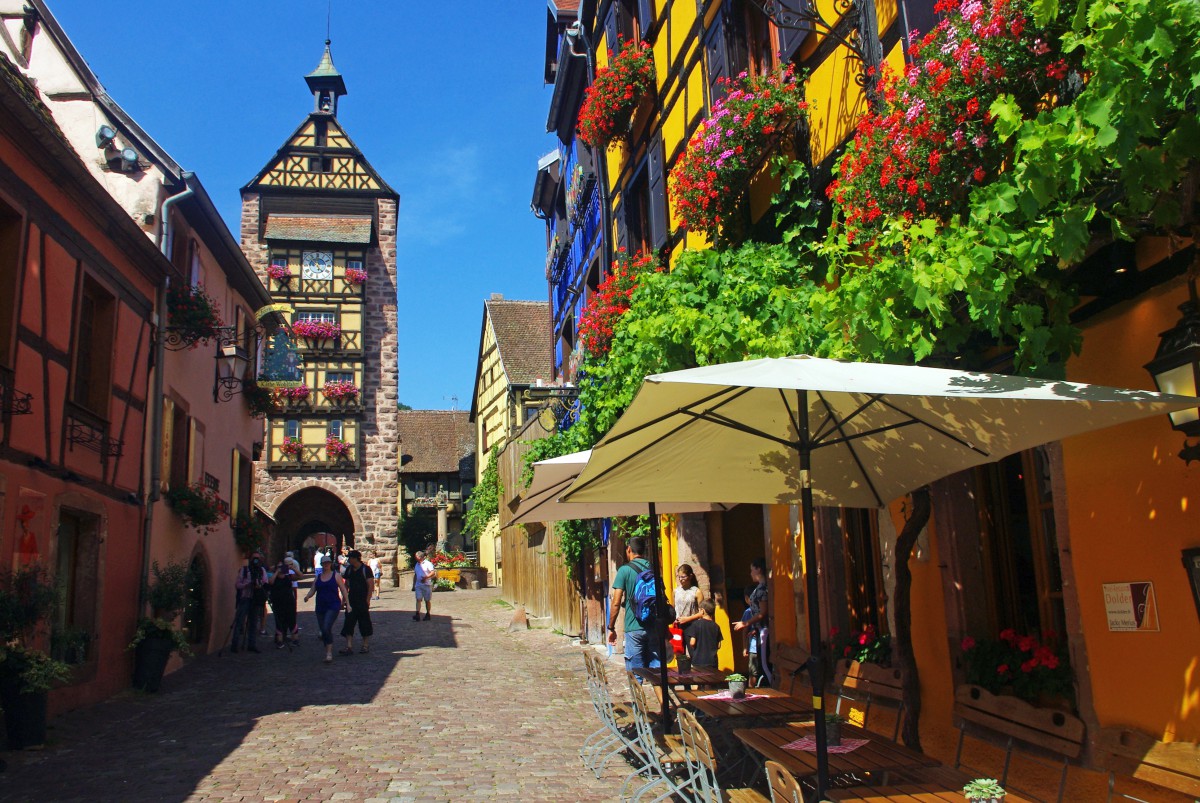
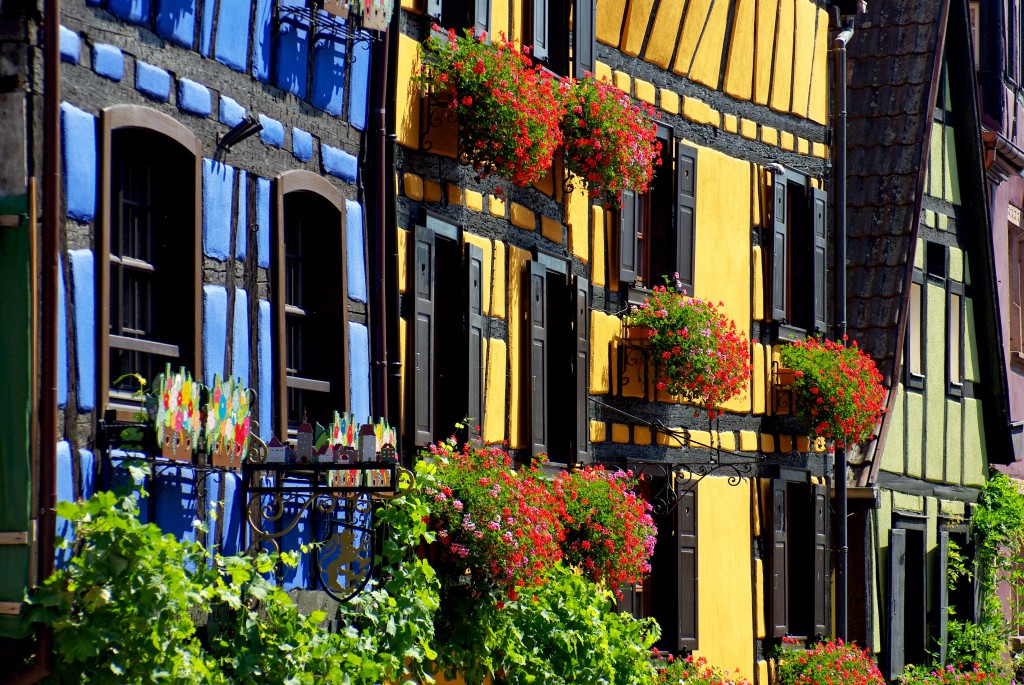
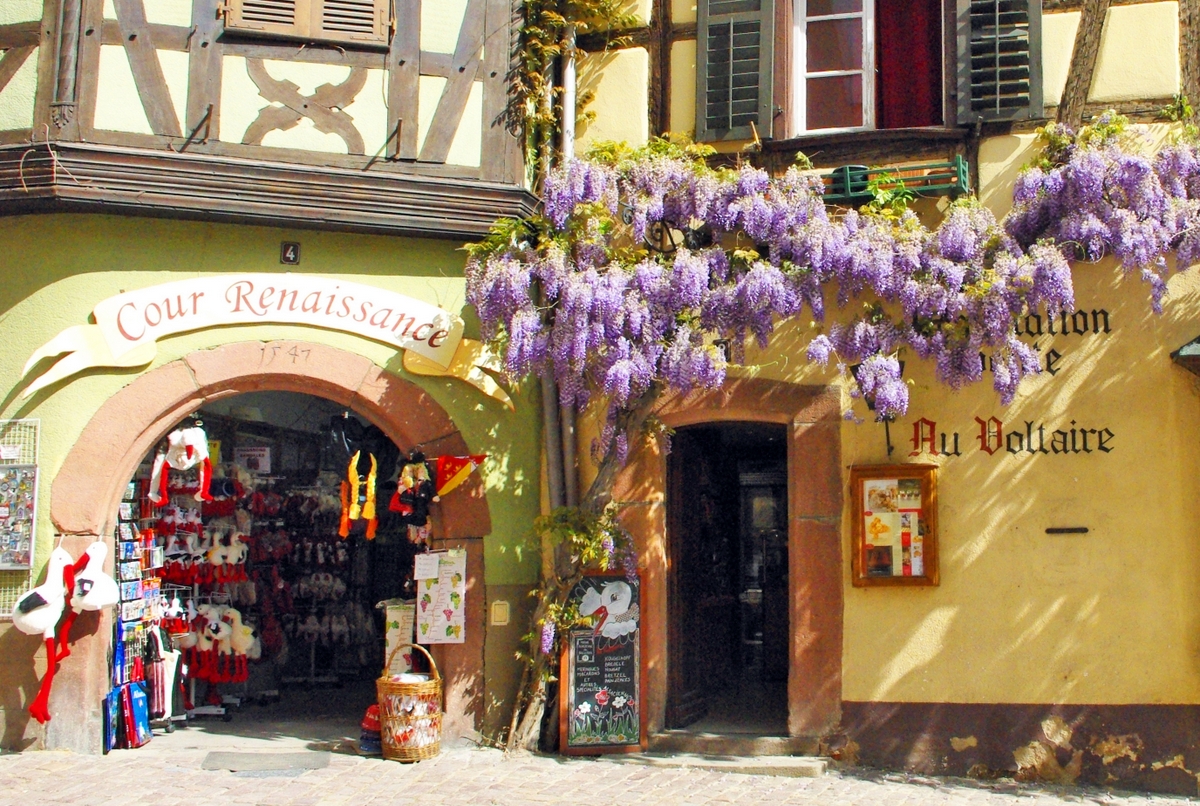
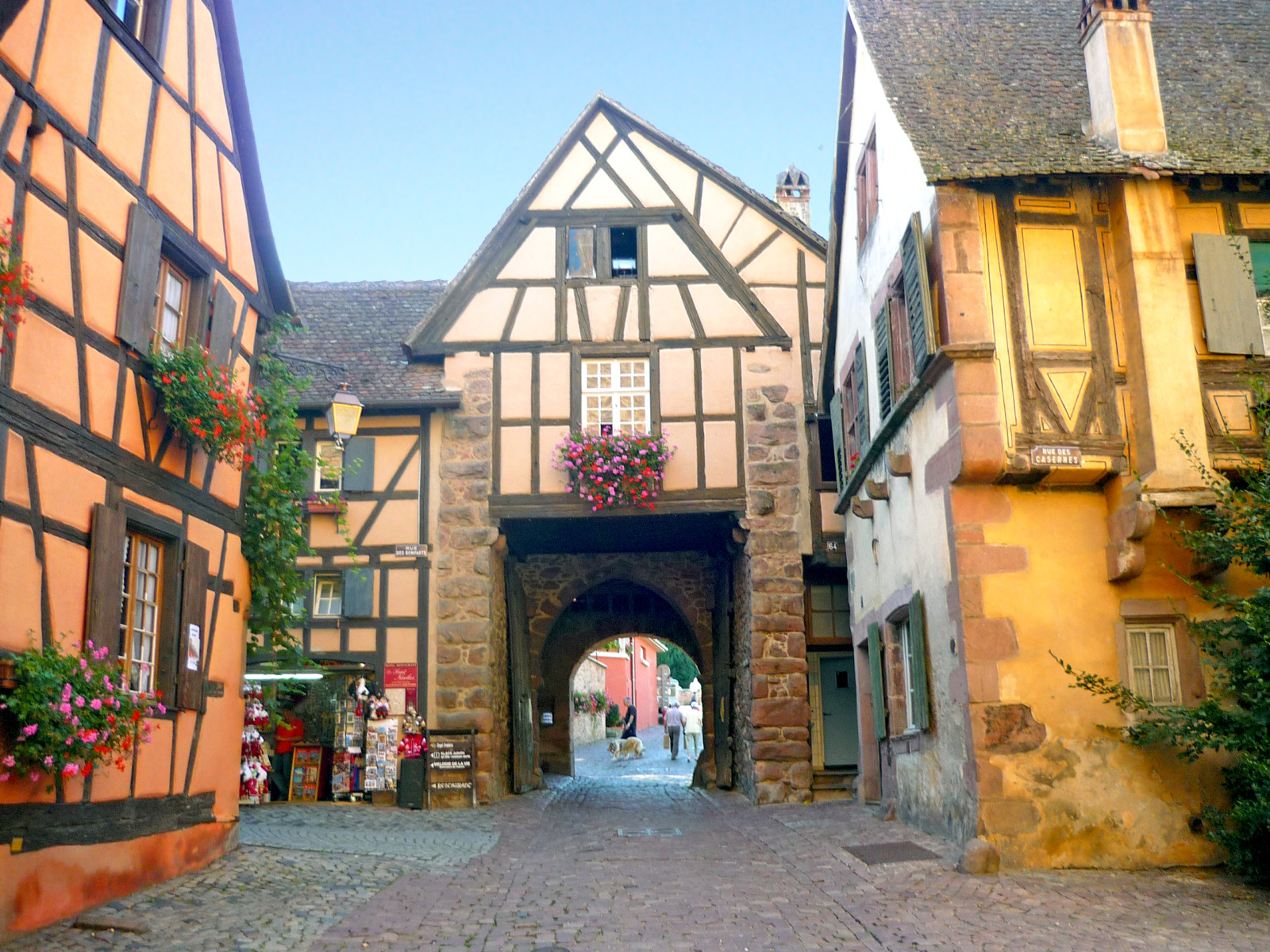
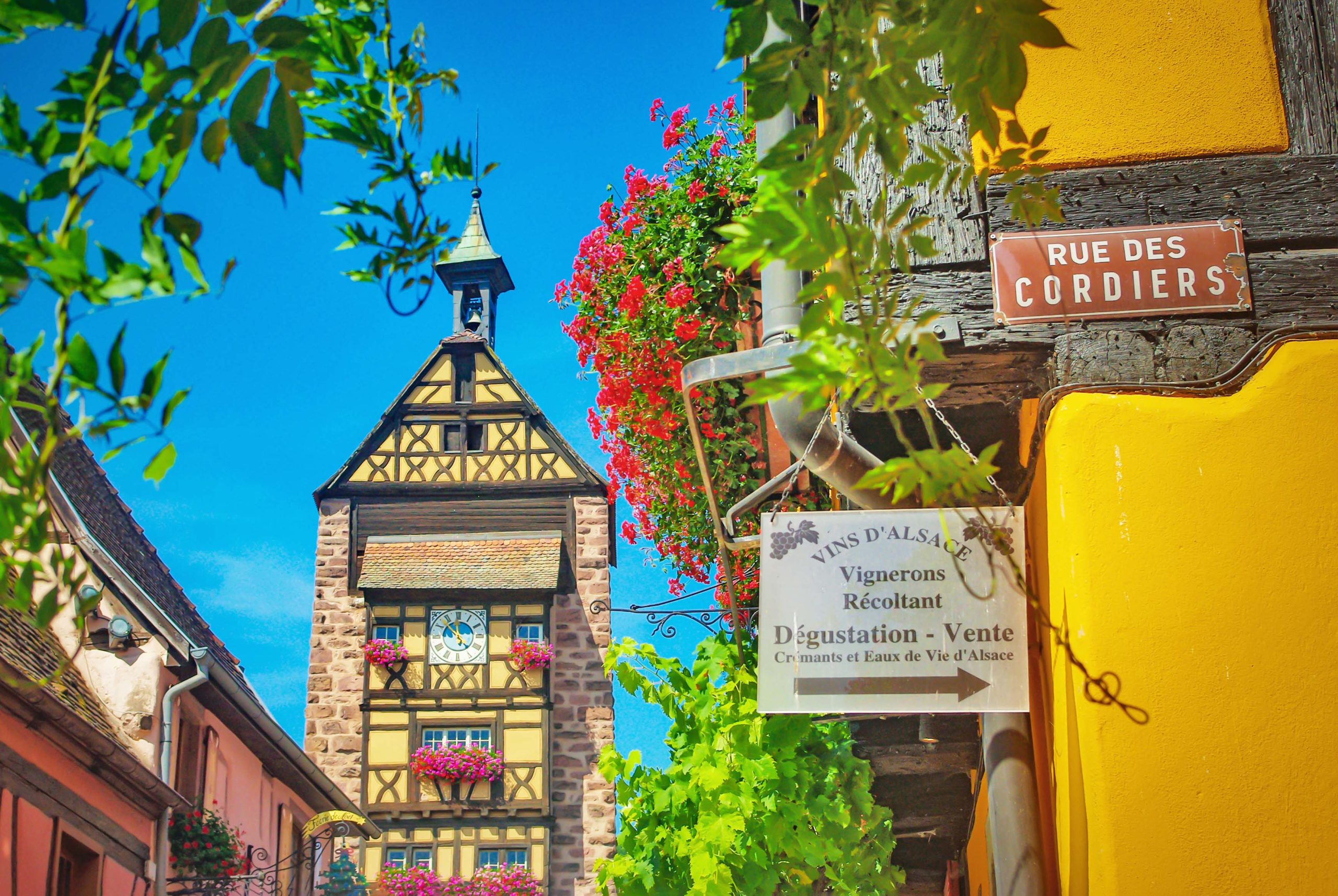
The most viewed villages of France on the blog
The name of the French village that has been seen the most on the French Moments blog is…
I am sure you have heard of it – or at least seen a picture of it.
Mont Saint-Michel is a French commune on the borders of Normandy and Brittany. It takes its name from the rocky islet dedicated to Saint Michael where the abbey of Mont-Saint-Michel now stands.
The architecture of Mont Saint-Michel and its bay make it the most visited tourist site in Normandy and one of the ten most visited in France – the first site after those of Île-de-France – with nearly two and a half million visitors each year.
In 2019, the commune had 29 inhabitants, known as the Montois and Montoises.
The islet of Mont Saint-Michel has become over time an emblematic element of French heritage and it is surprising to note that this site was not included in the ranking of the 10 most searched French villages on Google.
Find out more about Mont Saint-Michel on the blog.

![Villages in France - Mont Saint-Michel © Horst J. Meuter - licence [CC BY-SA 4.0] from Wikimedia Commons](https://frenchmoments.eu/wp-content/uploads/2022/05/Mont-Saint-Michel-©-Horst-J.-Meuter-licence-CC-BY-SA-4.0-from-Wikimedia-Commons-scaled.jpg)
![Villages in France - Mont Saint-Michel © Tanya Dedyukhina - licence [CC BY 3.0] from Wikimedia Commons](https://frenchmoments.eu/wp-content/uploads/2022/05/Mont-Saint-Michel-©-Tanya-Dedyukhina-licence-CC-BY-3.0-from-Wikimedia-Commons-scaled.jpg)
![Mont Saint-Michel Hôtellerie de la Sirène © Edouard Hue - licence [CC BY-SA 3.0] from Wikimedia Commons](https://frenchmoments.eu/wp-content/uploads/2022/05/Mont-Saint-Michel-Hôtellerie-de-la-Sirène-©-Edouard-Hue-licence-CC-BY-SA-3.0-from-Wikimedia-Commons-scaled.jpg)
![Mont-Saint-Michel © Amaustan - licence [CC BY-SA 4.0] from Wikimedia Commons](https://frenchmoments.eu/wp-content/uploads/2022/05/Mont-Saint-Michel-©-Amaustan-licence-CC-BY-SA-4.0-from-Wikimedia-Commons-scaled.jpg)
Have you ever visited one of these villages in France? Tell me in the comments below.



Haven’t been to Riquewihr yet but we are planning a trip to the Alsace region next year and Riquewihr is definitely on the list of towns we intend to visit. Very much looking forward to it. Your blog has been a great help while planning. Thanks again
You’re welcome Joe! Riquewihr is such a beautiful village nestled in the Alsace vineyards – I’m sure you’ll love it! 🙂
Each and every picture is gorgeous. Pierre, you are the best of the best!!!
Thank you for the joy and sharing your talents!
You’re very kind, thank you Marshall! I do take a lot of care in the photos I post on the blog 🙂